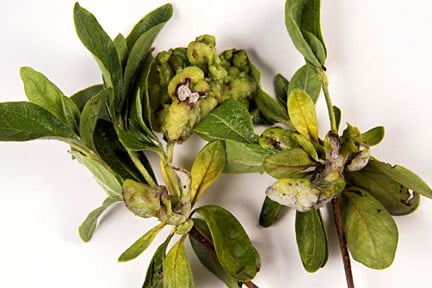
Quick facts
Common name - Azalea gall
Scientific name - Exobasidium japonicum
Plants affected - Rhododendrons, mainly azaleas
Main symptoms - Galls (fleshy swellings) on leaves or flowers
Caused by - Fungus
Timing - Spring until autumn
What is azalea gall?
This is a common disease caused by the fungus Exobasidium japonicum that disfigures, but does not kill, rhododendrons including azaleas. It spreads by airborne spores.
Symptoms
Azalea gall is a very distinctive and curious-looking disease;
- Galls varying in size from that of a pea to a small plum form on the leaves or flowers
- The leaf or flower involved is practically replaced by the fleshy irregular gall
- Galls are at first pale green, or very rarely reddish
- Later they become white owing to the formation of a floury bloom, which is a superficial coating of fungal spores
Control
Non-chemical control
- Remove and dispose of the galls, ideally before they become white and therefore infectious
- Indoors, avoid an excessively moist atmosphere after the disease has appeared
- Replacement is the best option where a plant is heavily and persistently affected
- It is thought that some insects and mites may spread the spores of the fungus, so prevent or control outbreaks of damaging invertebrates if possible
Chemical control
There are no fungicides available to amateur gardeners for the control of azalea gall.
Biology
The spores of the azalea gall fungus are insect or air-borne, and spread the disease from infected to healthy plants. On of the spores the fungus enters the tissues of the host, but can then have a long incubation period so that symptoms may not appear until several months after infection. However, very little detail is known about the life-cycle of the fungus.
A closely-related fungus causes a similar disease on camellias.



